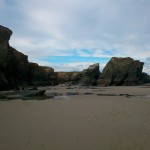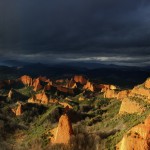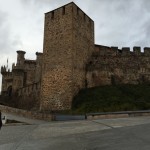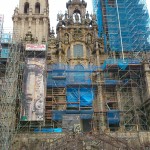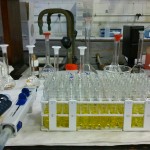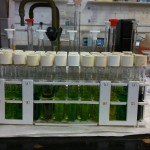The New Year began full of Spanish culture and with the end of my lab experiment. I can’t believe how fast the weeks have gone by, especially the last couple weeks of holidays. My visit to Galicia was amazing, mostly because it was incredibly rain-free and with temperatures around 20 degrees (a couple days after returning to Madrid it started raining in Galicia non-stop, as is more typical in the winter). The Galician countryside reminded me a lot of the east coast of Canada: very green, with farmhouses here and there and grazing cattle. Stark contrast to Cataluña’s dry, rocky landscape. We visited some great places along the way and around: the Episcopal Palace in Astorga, designed by celebrated Catalan architect, Antoni Gaudí; the beach, Playa de las Catedrales, known for its rock formations that you can visit when the tide is low; Las Medulas, the remains of the largest gold mine in the Roman empire which they exploited for 250 years; the Templar castle in Ponferrada; and of course, the Cathedral of Santiago de Compostela, the final destination of the Way of Santiago. Combined with visits to the Museo del Prado and the National Archaelogy Museum in Madrid, as well as art exhibits at two different cultural centres, I can certainly say I learned a lot of Spanish history and culture during my holidays!
- The main façade under renovation
On my first day back to the lab in Barcelona, I took the last CO2 readings. Then it was time to do K2SO4 extractions and analyze carbon, nitrate, ammonium, and total nitrogen from the extracts. As I had done these analyses with the initial, non-incubated soils, the second time around was easier and more efficient. I now have a bunch of data to analyze.
- Sample extracts before adding hypochlorite solution
- Sample extracts after adding hypochlorite solution
Next month I’ll start fractionation of the final, incubated soils which, having done fractionation in November, shouldn’t take me too long either. Then what is left is the isotope analysis of the fractions. Joan is working on seeing if we can get the samples analysed here at UB rather than shipping them to UBC, as there is quite a bit of paperwork involved to import soils to Canada. It’s looking good so far though, so I’ll keep my fingers crossed till the end!

